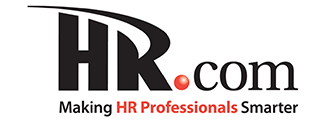With a new virtual workforce, companies are using mentoring to connect to employees
Within the last few months, many companies have shifted their talent development focus to today’s greatest employee engagement threat: isolation and burnout. Instead of slashing the budget intended for employee development, which has been a historical response to uncertain conditions, organizations are proactively investing in mentoring initiatives that connect employees and help them support each other.
COVID-19 has made remote work a necessity, with enterprises like Apple and Google announcing no return to the office until mid-2021. Companies are turning to mentoring software to help connect their employees in these difficult times to engage and develop them. While some companies have been forced to lay off employees, they’ve also realized more than ever that they need to retain the employees who remain
HR practitioners are racing to put support in place for an unprecedented number of employee challenges. Organizations are dealing with newly remote employees, working parents with school-age children at home, employee illness, and the productivity impact from the events of 2020. Teams are disconnected and face new obstacles when collaborating. Managers are navigating difficult conversations without a script. All of these challenges create a serious risk of both isolation and burnout even for the most talented employees.
Now, companies are looking at solutions that will help employees find each other to make meaningful work connections, discuss shared challenges, learn from each other, and support each other. Interpersonal connection is key to combat these issues and mentoring is a cost-effective solution. These events have solidified mentoring as a core part of any modern talent strategy.
It’s no surprise that mentoring has taken hold as the go-to approach for addressing today’s greatest workforce challenges. Mentoring has shed its former reputation as a slow, one-way pouring of specific direction from an executive to a junior employee. Modern mentoring approaches are collaborative across functions, far-ranging in topic areas, and easy check-ins are enabled by mentoring software. Today, companies are innovating their approach to mentoring to meet the needs of employees.
Nielsen, a global data and analytics company, is one organization that has taken a bold new approach to mentoring programs. Within weeks of having a significant number of their 44,000 employees in over 90 countries newly remote, Nielsen demonstrated agility and innovation. The Diversity & Inclusion team held virtual town halls with employees and listened to requests for more opportunities to connect, collaborate, and build community. Nielsen responded with a Quick Connections program to help employees from across geographies and functions connect on shared interests or professional topics. It allows Nielsen employees to connect with someone else when they need it, meet for as long as they need, and end the mentoring relationship when it has run its course.
Many organizations, like Nielsen, are using multiple mentoring programs to support employees in different ways. The Quick Connections program provides a way for employees to connect virtually with others they wouldn’t otherwise have the opportunity to meet. However, Quick Connections supplemented an already robust professional development mentoring program.
Mentoring programs have been proven to promote an inclusive culture in the workplace. Matching algorithms can be set up to prioritize connections based on shared aspects of identity. For example, companies are launching Black Lives Matter mentoring groups to bolster community for Black & African American employees and their allies. Often, these programs are aligned with Employee Resource Groups (ERGs) or Business Resource Groups (BRGs) and enable the important work of those groups in the virtual environment.
Of course, the reverse approach of specifically matching mentoring relationships based on differences in identity is also gaining momentum as organizations look to find ways to promote D&I with a remote workforce. Creative approaches to mentoring programs, such as cross-functional groups and mentoring circles are being used to match employees from different backgrounds and across differences in the organizational level, country/region, gender, and race. These mentoring groups are actively engaging in discussions about complex D&I topics, especially as they navigate the world of remote work.
Mentoring has emerged as the key approach to solving isolation and burnout for remote employees. Companies are turning to software to help employees enroll and get matched in innovative new approaches to mentoring relationships. Mentoring programs support the virtual workforce by enabling just in time connections, supporting employee communities, and creating opportunities to build an inclusive culture.
Jenn Labin is Chief Diversity Officer for MentorcliQ. For over fifteen years, Jenn has had success working with a wide spectrum of organizations including large private sector businesses, government/military operations, and higher-education institutions. She is the author of Mentoring Programs That Work.




